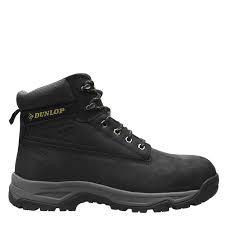Ensuring Workplace Safety: The Essential Role of Safety Boots

The Importance of Safety Boots in the Workplace
In any work environment where there are potential hazards present, safety should always be a top priority. One essential piece of personal protective equipment that plays a crucial role in ensuring worker safety is safety boots.
Safety boots are specially designed footwear that provides protection for the feet and ankles against various workplace hazards. They are equipped with features such as reinforced toes, slip-resistant soles, and puncture-resistant midsoles to safeguard workers from injuries.
Here are some key reasons why safety boots are vital in the workplace:
- Protection: Safety boots protect the feet from falling objects, sharp materials, electrical hazards, and slippery surfaces. They act as a barrier between potential dangers and the feet of workers.
- Prevention of Injuries: By wearing safety boots, workers reduce the risk of injuries such as cuts, punctures, fractures, and burns. These boots provide an extra layer of defense that can prevent serious accidents.
- Compliance with Regulations: Many industries have strict safety regulations that require workers to wear appropriate personal protective equipment, including safety boots. Compliance with these regulations is essential to maintain a safe work environment.
- Durability: Safety boots are designed to withstand harsh conditions and daily wear and tear. Their durable construction ensures they can provide long-lasting protection for workers in demanding environments.
- Enhanced Comfort: Modern safety boots are not only protective but also comfortable to wear for extended periods. Features such as cushioned insoles, moisture-wicking lining, and ergonomic design contribute to overall comfort.
In conclusion, safety boots are a critical component of workplace safety measures. Investing in high-quality safety footwear not only protects workers from potential hazards but also promotes a culture of safety within the organization. By prioritizing the use of safety boots, employers demonstrate their commitment to ensuring the well-being and security of their workforce.
“The Critical Role of Safety Boots in Workplace Safety”
“Mechanisms of Protection: How Safety Boots Shield Workers”
4. “Key Features to Consider When Selecting Safety
- 1. What are safety boots?
- 2. Why are safety boots important in the workplace?
- 3. How do safety boots protect workers?
- 4. What features should I look for in safety boots?
- 5. Are safety boots required by law in certain industries?
1. What are safety boots?
Safety boots are specialized footwear designed to provide protection for the feet and ankles in various work environments where hazards are present. These boots are equipped with features such as reinforced toes, slip-resistant soles, and puncture-resistant midsoles to safeguard workers from potential injuries. Safety boots serve as a crucial personal protective equipment by acting as a barrier against falling objects, sharp materials, electrical hazards, and slippery surfaces. They play a vital role in preventing injuries such as cuts, punctures, fractures, and burns, making them an essential gear for maintaining workplace safety standards.
2. Why are safety boots important in the workplace?
Safety boots are crucial in the workplace for several reasons. Firstly, safety boots provide essential protection for workers’ feet and ankles against various hazards present in industrial environments, such as falling objects, sharp materials, and slippery surfaces. By wearing safety boots, employees can significantly reduce the risk of injuries like cuts, punctures, fractures, and burns. Additionally, safety boots help ensure compliance with workplace safety regulations that mandate the use of appropriate personal protective equipment. Investing in quality safety footwear not only safeguards workers but also fosters a culture of safety and well-being within the organization.
3. How do safety boots protect workers?
Safety boots protect workers in various ways to ensure their safety in the workplace. These specially designed footwear offer crucial protection by incorporating features such as reinforced toes to guard against impact from falling objects, slip-resistant soles to prevent slips and falls, and puncture-resistant midsoles to shield against sharp objects on the ground. By providing a sturdy barrier between potential hazards and the feet of workers, safety boots play a vital role in preventing injuries such as cuts, punctures, fractures, and burns. Additionally, safety boots promote a sense of security and confidence among workers, enabling them to focus on their tasks without compromising their well-being.
4. What features should I look for in safety boots?
When choosing safety boots, it is essential to consider several key features to ensure optimal protection and comfort in the workplace. Look for safety boots with reinforced toe caps, such as steel or composite materials, to protect against impact and compression injuries. Slip-resistant soles are crucial to prevent slips and falls on slippery surfaces. Additionally, consider boots with puncture-resistant midsoles to safeguard against sharp objects penetrating the sole. Other features to look for include electrical hazard protection, waterproofing, cushioned insoles for comfort, and a proper fit to support the feet during long hours of work. Prioritizing these features will help you select safety boots that meet the necessary safety standards and provide adequate protection in your work environment.
5. Are safety boots required by law in certain industries?
In many industries, the use of safety boots is mandated by law to ensure the protection and well-being of workers. Various regulatory bodies and occupational safety standards require employees to wear appropriate personal protective equipment, including safety boots, in environments where there are potential hazards present. Industries such as construction, manufacturing, mining, and logistics often have specific regulations that outline the mandatory use of safety footwear to prevent workplace injuries. Employers are responsible for ensuring compliance with these laws and providing their workers with the necessary safety gear to maintain a safe working environment.
